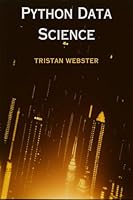
Categorical Data Analysis Using SAS, 3rd Edition
- Length: 620 pages
- Edition: 3rd
- Language: English
- Publisher: SAS Institute
- Publication Date: 2012-07-30
- ISBN-10: 1607646641
- ISBN-13: 9781607646648
- Sales Rank: #313199 (See Top 100 Books)
Statisticians and researchers will find Categorical Data Analysis Using SAS, Third Edition, by Maura Stokes, Charles Davis, and Gary Koch, to be a useful discussion of categorical data analysis techniques as well as an invaluable aid in applying these methods with SAS. Practical examples from a broad range of applications illustrate the use of the FREQ, LOGISTIC, GENMOD, NPAR1WAY, and CATMOD procedures in a variety of analyses. Topics discussed include assessing association in contingency tables and sets of tables, logistic regression and conditional logistic regression, weighted least squares modeling, repeated measurements analyses, loglinear models, generalized estimating equations, and bioassay analysis.
The third edition updates the use of SAS/STAT software to SAS/STAT 12.1 and incorporates ODS Graphics. Many additional SAS statements and options are employed, and graphs such as effect plots, odds ratio plots, regression diagnostic plots, and agreement plots are discussed. The material has also been revised and reorganized to reflect the evolution of categorical data analysis strategies. Additional techniques include such topics as exact Poisson regression, partial proportional odds models, Newcombe confidence intervals, incidence density ratios, and so on.
Table of Contents
Chapter 1. Introduction
Chapter 2. The 2 2Table
Chapter 3. Sets of 2 2Tables
Chapter 4. 2 rand s 2Tables
Chapter 5. The s rTable
Chapter 6. Sets of s rTables
Chapter 7. Nonparametric Methods
Chapter 8. Logistic Regression I: Dichotomous Response
Chapter 9. Logistic Regression II: Polytomous Response
Chapter 10. Conditional Logistic Regression
Chapter 11. Quantal Response Data Analysis
Chapter 12. Poisson Regression and Related Loglinear Models
Chapter 13. Categorized Time-to-Event Data
Chapter 14. Weighted Least Squares
Chapter 15. Generalized Estimating Equations







